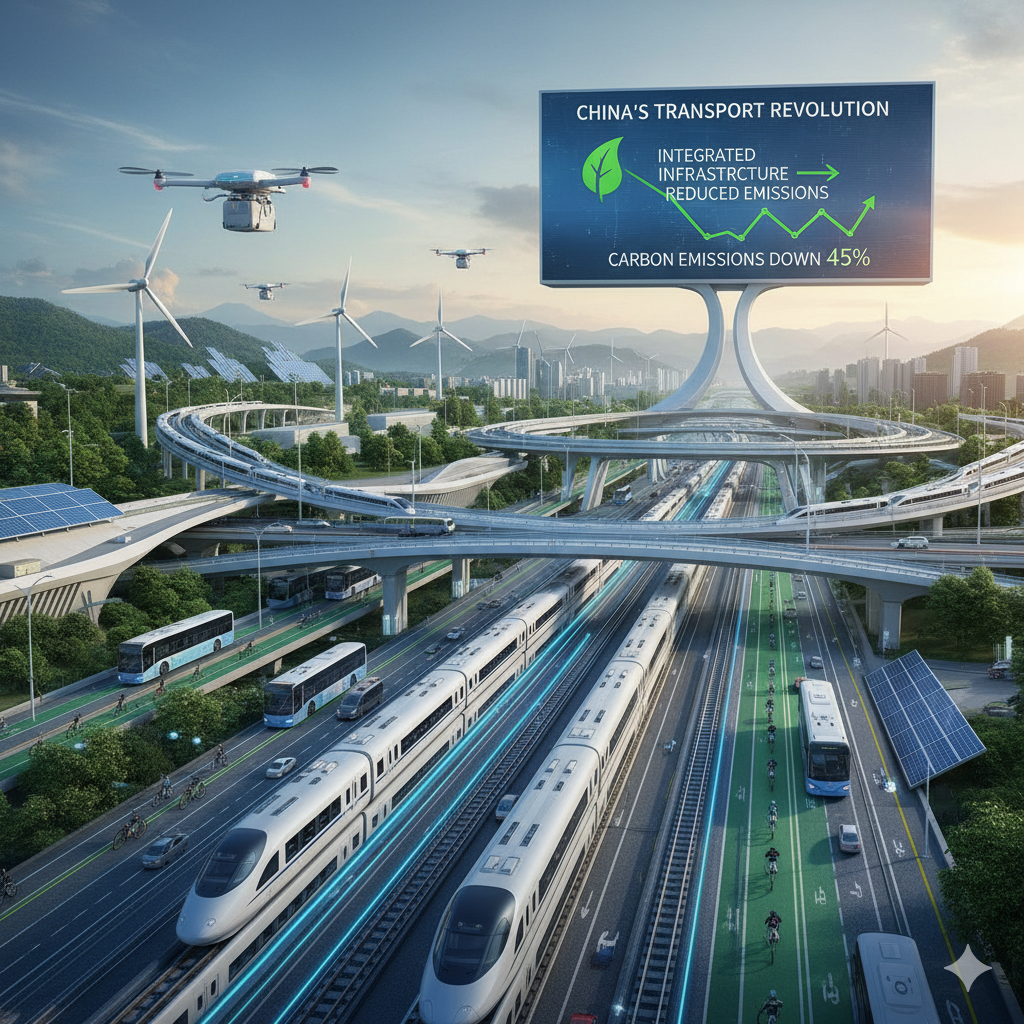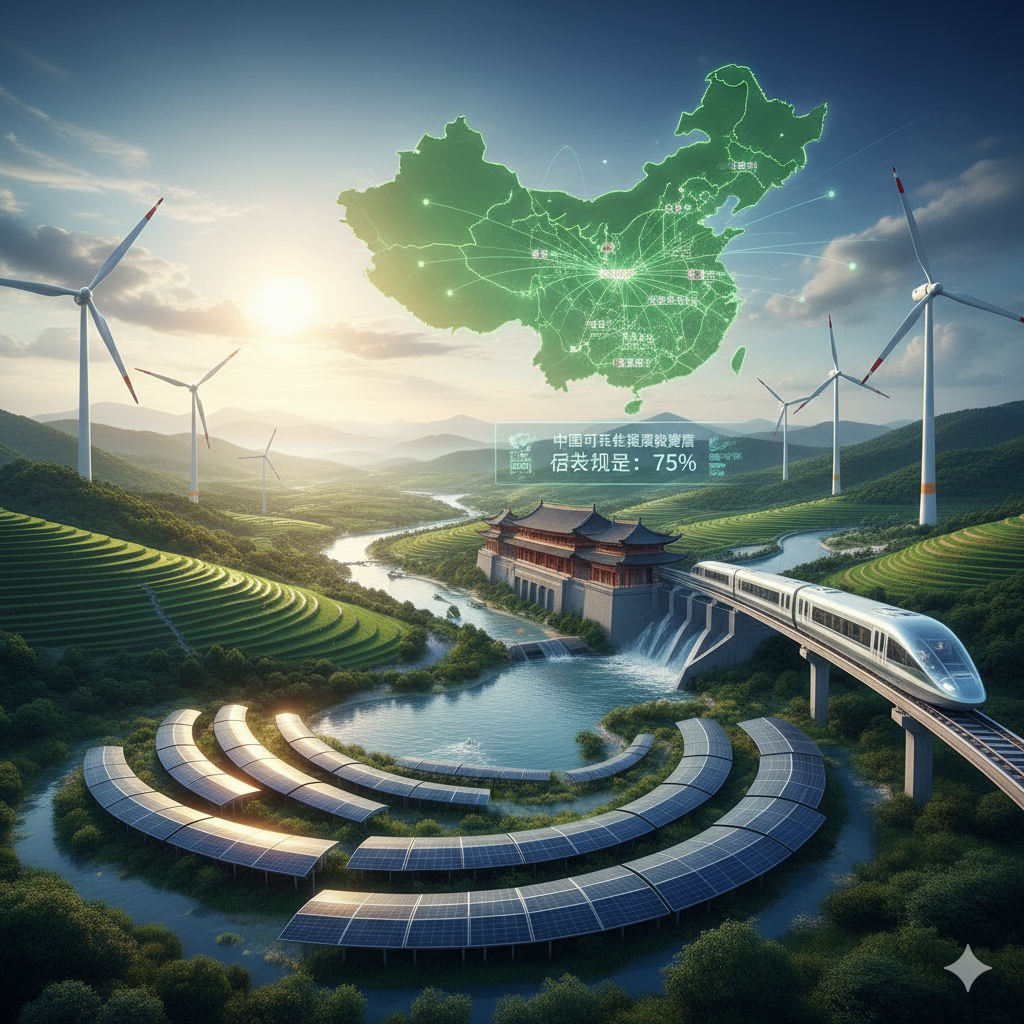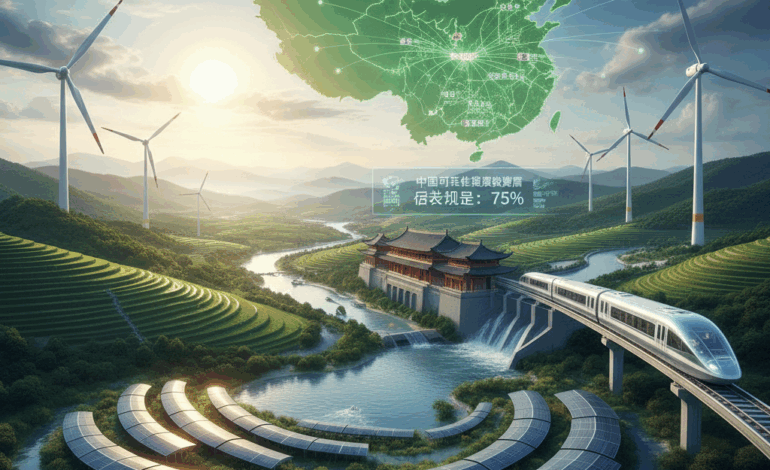Analytical Report: China’s Total Renewable Energy Consumption
Introduction
China stands at the crossroads of the global clean-energy transformation, emerging simultaneously as the world’s largest energy consumer and the leading investor in renewable power. As industrialization, urbanization, and technological expansion intensify energy demand, China has accelerated a strategic shift toward renewable resources to enhance energy security, reduce pollution, and meet carbon-neutrality goals by 2060.
This report analyzes China’s renewable consumption pattern, evaluates its energy mix, discusses sector-level adoption, and visualizes the scale and structure of renewable energy through graphical representation.
China’s Total Energy Consumption Mix
China’s primary energy consumption remains dominated by fossil fuels—especially coal—due to industrial demand and heating needs. However, renewable sources are rapidly growing in share.
Illustrative Breakdown of China’s Primary Energy Mix (%)
Coal: 56%
Oil: 19%
Natural Gas: 9%
Renewables: 14%
Nuclear: 2%
The pie chart above demonstrates China’s transitional phase: while renewables take a meaningful share, the system is still anchored by coal.
Growth in Renewable Energy Consumption
China now leads the world in:
Solar power capacity
Wind power capacity
Hydropower generation
Battery manufacturing & energy storage adoption
Electric vehicles and charging infrastructure
Illustrative Renewable Energy Consumption by Source (Exajoules)
| Source | Consumption (EJ)* |
|---|---|
| Hydropower | 15 |
| Wind | 10 |
| Solar | 8 |
| Biomass & Geothermal | 4 |
*Illustrative values for visualization
Hydropower remains the backbone of China’s renewable energy. Yet solar and wind have experienced exponential growth due to policy support, manufacturing competitiveness, and falling technology costs.
Key Drivers of Renewable Energy Expansion
✅ Government Policy
Five-Year Plans emphasize energy transition
Renewable portfolio standards for utilities
Carbon trading pilot programs
Subsidies and feed-in tariffs (gradual transition to competitive bidding)
✅ Industrial Capacity and Technology
China manufactures ~80% of the world’s solar panels
Cost leadership in EV batteries & wind turbines
Rapid grid modernization and storage build-out
✅ Energy Security
Reducing dependence on imported oil and gas
Utilizing abundant domestic solar & wind resources
Sector-Wise Renewable Energy Consumption
| Sector | Key Renewable Growth Area |
|---|---|
| Electric Power | Solar, wind, hydro expansion |
| Transport | EVs, battery buses, metro electrification |
| Industry | Electrification, green hydrogen pilots |
| Buildings | Solar PV rooftops, heat pumps, geothermal district heating |
Challenges to Renewable Expansion
Even with rapid growth, China faces structural hurdles:
| Challenge | Description |
|---|---|
| Coal reliance | Coal still required for grid stability and industrial heat |
| Grid curtailment | Intermittency issues; curtailment in high-generation provinces |
| Seasonal variability | Hydropower fluctuates with rainfall |
| Land & water constraints | Utility solar & hydro require significant resources |
China is solving these via ultra-high-voltage (UHV) transmission lines, pumped-storage hydropower, and industrial solar-plus-agriculture (“agrivoltaics”).
Future Outlook
By 2030, China aims to:
Peak carbon emissions
Achieve >1,200 GW of solar + wind capacity
Increase renewables’ share significantly in electricity and industrial heat
Scale green hydrogen for steel, chemicals, and heavy transport
Renewables will increasingly shift from capacity growth to deep system integration through:
Advanced storage technologies
Real-time electricity markets
Digital grid management
Distributed solar in rural & urban rooftops
Conclusion
China’s renewable energy growth is reshaping the global energy landscape. Though fossil fuels remain dominant today, China’s investment scale, technology leadership, and policy momentum are accelerating the clean-energy transition. The next decade will define whether China can sustain rapid renewable absorption, decarbonize heavy industries, and optimize nationwide energy storage — paving the road toward carbon neutrality.







